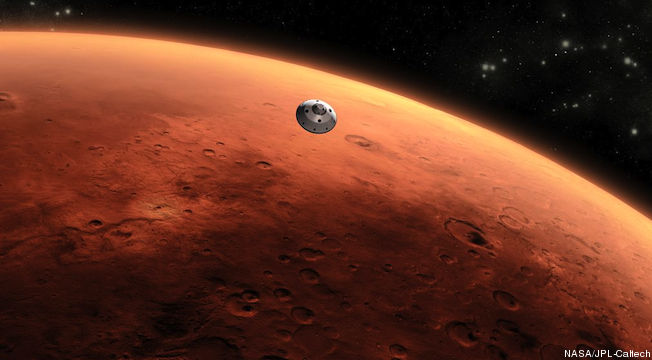Here you can follow LIVE the landing of NASA rover Curiosity (fully automated lab) on Mars.
- Live stream from NASA TV
- Live video stream from NASA’s ustream channel with commentary
- Live video stream from NASA’s ustream channel without commentary
- Universe Today’s live Google+ Hangout
The above streams will be available to watch from 4:30 am UTC on August 6th, with the entry and landing scheduled for around 6:30 am UTC. (7:30 am / eastern Europe)
- NASA/JPL “official” coverage solarsystem.nasa.gov/news/msl_landing.cfm
- Mars Curiosity home: mars.jpl.nasa.gov (the best place to be)
- Mobile app: http://mars.jpl.nasa.gov/mobile/info/
- Live updates from the Mars Curiosity: Twitter
- Live updates from the Mars Curiosity: Facebook
- First images will be here: http://mars.jpl.nasa.gov/msl/multimedia/raw/
One of the most daring space missions ever undertaken is nearing Mars.
In the next few hours Nasa will attempt to land its one-tonne Curiosity rover on the Red Planet to study the possibility that this world may once have hosted microbial life.
[youtube http://www.youtube.com/watch?v=P4boyXQuUIw] The vehicle is packed with scientific instruments, including a laser that can zap rocks to determine their make-up.Curiosity is currently hurtling through space, close to the end of a 570 million km journey from Earth.
Engineers describe its trajectory as near-perfect and they have passed up the last two opportunities to make course corrections.
A signal confirming it has landed inside a deep depression known as Gale Crater is expected on Earth about seven minutes later, at 05:31 GMT.
But getting this audacious exploration project safely down will be a colossal challenge.
Two-thirds of all missions sent to the Red Planet have failed, a good many lost on entry into the thin but unforgiving Martian atmosphere.
Continue reading the main story
Curiosity – Mars Science Laboratory
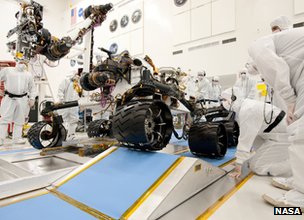

- Mission goal is to determine whether Mars has ever had the conditions to support life
- Project costed at $2.5bn; will see initial surface operations lasting two Earth years
- Onboard plutonium generators will deliver heat and electricity for at least 14 years
- 75kg science payload more than 10 times as massive as those of earlier US Mars rovers
- Equipped with tools to brush and drill into rocks, to scoop up, sort and sieve samples
- Variety of analytical techniques to discern chemistry in rocks, soil and atmosphere
- Will try to make first definitive identification of organic (carbon rich) compounds
- Even carries a laser to zap rocks; beam will identify atomic elements in rocks
And yet, the US space agency has high confidence that the high-risk descent strategy its engineers have devised will deliver an intact vehicle to the surface.
This strategy will use a sequence of fully automated manoeuvres to slow the fall from an initial 20,000km/h at the top of the atmosphere to less than 1m/s at the moment of touch-down.
The last stage in the sequence will see a hovering, rocket-powered crane lower the rover to the ground on nylon cords.
The manoeuvres have raised eyebrows because of their complexity, but the entry, descent and landing (EDL) team leader, Adam Steltzner, has emphasised the amount of “reasoned engineering” that has informed the design.
“I slept better last night than I have in years, and I think that’s because it’s done – whatever’s going to happen is going to happen,” he said.
Nasa will be monitoring the drama from the Jet Propulsion Laboratory (JPL) in Pasadena, California.
It is here that mission control will receive the telemetry from Curiosity that has been bounced to Earth by the overflying satellite known as Odyssey.
Engineers can only watch and wait, however. The 250 million km between Mars and Earth right now means there is a 13-minute lag in communications.
The mission team knows that when it gets that first signal to say the rover has entered the planet’s atmosphere, the vehicle will in reality have already landed or been destroyed some seven minutes previously.
Step by step: How the Curiosity rover will land on Mars
Continue reading the main story
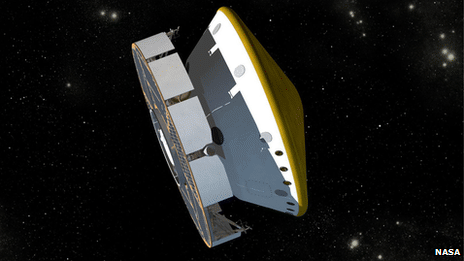

“It will be really exciting; it always is. It’s electrifying but it’s tense,” Doug McCuistion, the director of Nasa’s Mars programme, told BBC News.
“Everybody white-knuckles through these ‘seven minutes of terror’, and it’s named that for a good reason.”
This is the fourth rover Nasa has attempted to put on the surface of Mars since 1997.
But Curiosity – also known as the Mars Science laboratory (MSL) – dwarfs those previous efforts in size and sophistication.
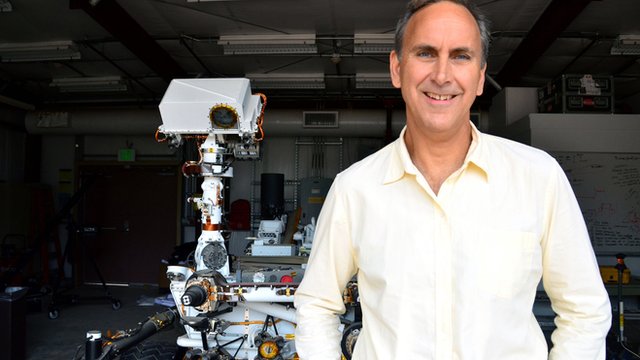

Assuming the robot lands safely, it will spend 98 (Earth) weeks scouring Martian soils and rocks for any signs that current or past environments on the planet could have supported microbial life.
Gale Crater was chosen as the landing site because satellite pictures had spied sediments in the depression that looked as though they were laid down in the presence of abundant water.
“We see a lot of evidence that water was on Mars in the distant past and flowed across the surface for maybe millions of years,” explained Ashwin Vasavada, the MSL-Curiosity deputy project scientist.
“This mission goes one step further by trying to understand whether the environments in which the water persisted were habitable. Were there basic ingredients for life there? We’re going to understand what the conditions were like when life was most likely in Mars’ ancient history.”
The rover is equipped with 10 advanced instruments. It also has a plutonium battery and so should have ample power to keep rolling for more than a decade.
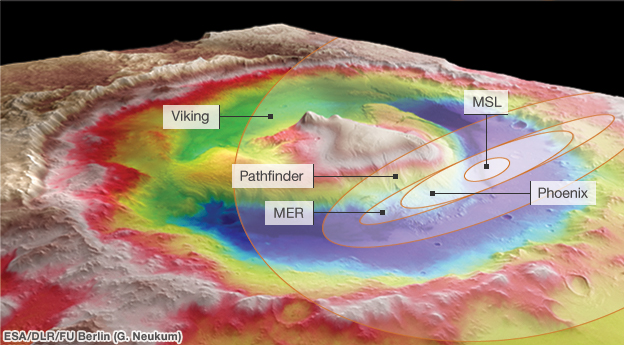

- Engineers define an ellipse in which they can confidently land
- Successive landings have become ever more accurate
- Viking’s ellipse was 300km across – wider than Gale Crater itself
- Phoenix (100km by 20km) could not confidently fit in Gale
- Curiosity’s landing system allows it to target the crater floor
- The rover’s projected landing ellipse is just 7km by 20km
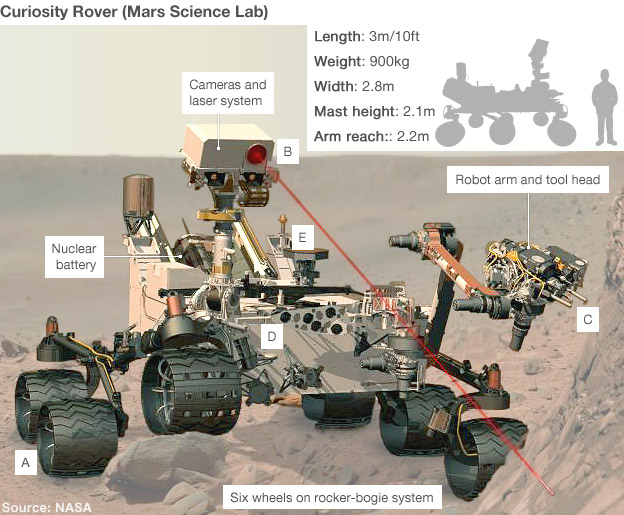

- (A) Curiosity will trundle around its landing site looking for interesting rock features to study. Its top speed is about 4cm/s
- (B) This mission has 17 cameras. They will identify particular targets, and a laser will zap those rocks to probe their chemistry
- (C) If the signal is significant, Curiosity will swing over instruments on its arm for close-up investigation. These include a microscope
- (D) Samples drilled from rock, or scooped from the soil, can be delivered to two hi-tech analysis labs inside the rover body
- (E) The results are sent to Earth through antennas on the rover deck. Return commands tell the rover where it should drive next
Source and read more at:
http://www.bbc.co.uk/news/science-environment-19078494
http://www.nasa.gov/mission_pages/msl/index.html
http://mars.jpl.nasa.gov/msl/
http://www.youtube.com/user/JPLnews
http://www.youtube.com/user/NASAtelevision/feed
TBU NEWS

